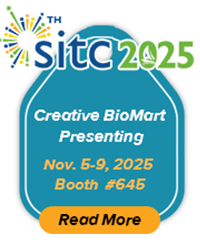Lipase Activity Colorimetric Assay Kit
| Cat.No. : | Kit-0515 |
- Specification
- Gene Information
- Related Products
- Download
| Tag : | Non |
| Description : | Lipases perform essential roles in the digestion, transport and processing of dietary lipids (e.g. fats and oils) in living organisms. In humans, pancreatic lipase is the key enzyme responsible for breaking down fats in the digestive system by converting triglyceride to monoglyceride and free fatty acid. Pancreatic lipase monitoring is also used to help diagnose Crohn's disease, cystic fibrosis and celiac disease. Damage to the pancreas can exhibit a 5 - 10 fold increase of serum lipase levels within 24 to 48 hours. In the Lipase Assay Kit, lipase hydrolyzes a triglyceride substrate to form glycerol which is quantified enzymatically by via monitoring a linked change in the OxiRed probe absorbance (λ = 570nm). This assay is rapid, simple, sensitive, and reliable, as well as, suitable for high throughput activity screening of lipase. |
| Storage : | Store the kit at -20°C, protect from light. Allow Assay Buffer to warm to room temperature before use. Briefly centrifuge vials before opening. |
| Size : | 100 assays |
| Kit Components : | Assay Buffer, 1 x 25ml Enzyme Mix (lyophilized), 1 vial Glycerol Standard, 1 x 0.2ml Lipase positive control, 1 vial Lipase Substrate, 1 vial OxiRed Probe, 1 x 0.2ml |
| Target Species : | Mammalian |
| Detection method : | Absorbance (570 nm) |
| Features & Benefits : | • Simple procedure; takes ~ 60-90 minutes • Fast and convenient • Sensitive assays for measuring Lipase activity in various biological samples. |
| Preparation : | Probe: Ready to use as supplied. Warm to room temperature to melt frozen DMSO before use. Store at -20°C, protect from light and moisture. Enzyme Mix: Dissolve in 220 µl Assay Buffer. Partition into aliquots in vials and store at -20°C. Use within two months. Lipase Substrate: Freezing for storage may cause the substrate to separate from the aqueous phase. To redissolve the substrate, keep the cap tightly closed, thaw then place in a hot water bath (80 - 100°C) for 1 minute until the substrate looks cloudy, vortex for 30 seconds. The substrate should be clear. Repeat heat and vortex one more time. The substrate is now completely in solution, and ready for use. Lipase positive control: Dissolve the positive control in 100 µl Assay Buffer. Add 5 µl and adjust the volume to 50 µl/well with Assay Buffer as positive control. Store at -20°C |
| Assay Protocol : | 1. Standard Curve Preparation: Add 10 µl of the glycerol standard to 990 µl of Assay Buffer to generate 1 mM glycerol, mix well. Add 0, 2, 4, 6, 8, 10 µl into a series of wells. Adjust volume to 50 µl/well with Assay Buffer to generate 0, 2, 4, 6, 8, 10 nmol/well of glycerol Standard. 2. Sample Preparations: Tissues (40 mg) or cells (2 x 10^6) can be homogenized in 4 volumes of Assay Buffer. Centrifuge to remove insoluble material at 13,000 x g, 10 min. Serum samples can be directly diluted in the Assay Buffer. Prepare test samples of up to 50 µl/well with Assay Buffer in a 96-well plate. We suggest testing several doses of your sample to make sure readings are within the standard curve. Glycerol in the sample will interfere with the result. It is corrected for by using a (substrate deficient) control for the sample. Note: Some Lipases require calcium. If your lipase requires calcium avoid EGTA in sample preparation and add calcium (1 - 5 mM) to the Lipase assay buffer before use. Glycerol in the sample will interfere with the result. It is corrected for by using a (substrate deficient) control for the sample. 3. Reaction Mix: Mix enough reagent for the number of assays to be performed. For each well, prepare a total 100 µl Reaction Mix. Sample Control Assay Buffer 93 µl 96 µl OxiRed Probe 2 µl 2 µl Enzyme Mix 2 µl 2 µl Lipase substrate 3 µl ----- Add 100 µl of the Sample Reaction Mix to each well containing the Glycerol Standards, Lipase positive controls, and test samples. Add 100 µl Control Reaction Mix to each well containing the sample controls. Mix well. 4. Incubate: Measure OD 570 nm at T1 to read A1, measure OD 570 nm again at T2 after incubating the reaction at 37°C for 60 - 90 min (or incubate longer time if the Lipase activity is low) to read A2, protect from light. 5. Calculation: The OD generated by oxidation of glycerol is ∆A570 nm = A2 – A1. Subtracting the OD 570 nm value of control from the sample to avoid glycerol in the sample. Plot Glycerol Standard Curve, Apply the ∆A570 nm to the glycerol standard curve to get B nmol of glycerol (glycerol amount generated between T1 and T2 in the reaction wells).Glycerol generated in the test samples can then be calculated: Lipase Activity = (B x Dilution factor)/ [(T2 - T1) x V] = nmol/min/ml = mU/ml Where: B is the Glycerol amount from the Standard Curve (in nmol). T1 is the time of the first reading (A1) (in min). T2 is the time of the second reading (A2) (in min). V is the pretreated sample volume added into the reaction well (in ml). Unit Definition: One unit is defined as the amount of lipase that hydrolyzes triglyceride to yield 1.0µmol of glycerol per minute at 37°C. |
| Sensitivity : | 0.02 mU/well |
| ◆ Recombinant Proteins | ||
| Lipase-3887R | Recombinant Rhizomucor miehei Lipase protein, His-tagged | +Inquiry |
Not For Human Consumption!
Inquiry
- Reviews (0)
- Q&As (0)
Ask a Question for All Lipase Products
Required fields are marked with *
My Review for All Lipase Products
Required fields are marked with *



